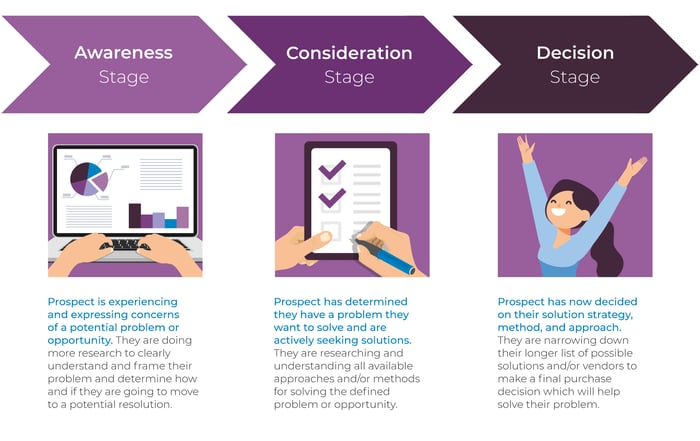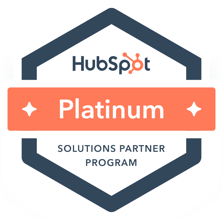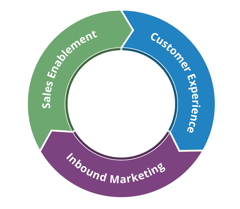Integrated Marketing Communications (IMC) is a strategic, collaborative, and promotional marketing function where a targeted audience receives consistent and persuasive brand messaging through various marketing channels in an integrated way to move buyers through the decision-making process. At the most basic level, integrated marketing communications helps to ensure that marketers are using all of the available channels to amplify a marketing campaign and brand messaging to reach their target audience or buyer persona. To help you develop your integrated marketing communications strategy, consider using these four steps to create and implement a cohesive and integrated marketing strategy and jumpstart your success.
1. Identify Different Marketing Communication Methods
As part of your integrated marketing strategy, it's imperative to determine the various marketing communication methods you want to leverage as part of your plan. Consider your target audience and how they like to receive information, gather facts, and perform research on the problem they are trying to solve. From there, determine what channels are most relevant for your specific campaign. Some examples include:
Content Marketing: Make your content available online through blog content, video marketing, premium content (behind a landing page to capture information), pop-ups, and dynamic website content to help your potential buyers connect and learn more about you even before they start the decision-making process.
Email Marketing: Use email to re-engage your existing audience through unique and helpful content. Always consider your existing contacts and how you can re-engage them through content. It's not always about generating new leads, but your most impactful marketing efforts often come from delivering the right content at the right time to your existing subscribers. Here is a helpful case study about how you can drive growth and see tremendous impact through email marketing.
Social Media Marketing: Social media opens the door to building relationships, developing brand awareness, and generating website traffic. When combined with email marketing and content marketing, digital marketing campaigns utilizing social media can bring exceptional results by connecting with your target audience on a platform they are already spending time on regularly. Here is another case study about driving lead generation and content results through social media.

2. Develop a Marketing Communication Plan
Once you have determined the marketing channels that will resonate with your audience, it's time to develop a comprehensive plan to execute your marketing initiatives. To do this, you need to focus on three primary items:
Audience: Determine the buyer persona for each of your marketing methods. For example, if one of your personas are baby boomers, consider email marketing and Facebook. If your other persona is millennials, consider texting and Instagram. Your persona will define what channels you use to engage with them, not the other way around.
Content: Define the content that will speak to your audience the most effectively. For example, if you are trying to generate new contacts for your database, you may want to have a top-of-the-funnel offer such as subscribing to a newsletter or downloading a checklist on your site. Pro Tip: You can even have this as a pop-up form displaying when people exit your website. This content offer gives you one last way to connect with them. You would be surprised how well these work. I have seen conversion up to 17% on pop-up forms. If you are trying to drive
re-engagement in your database to convert existing leads into opportunities, consider delivering them case studies, video testimonials, and more. This will aid them in their decision-making process.
Cadence: It's essential to understand how often people like to receive information. You can get this data from a variety of marketing automation platforms. For example, in HubSpot, we can see how often people read emails, engage on the website, and even social media. We can use that information to ensure we are sending content frequently enough, but not too often that it becomes overwhelming for the prospect. If you see that for a specific product or service you offer, the general sales cycle is around 90 days, you want your email cadence to align with that timeframe. Use the data available to you to make the best decision based on your audience and how often they engage with your brand.
3. Understand the Customer Decision-Making Process
Understand what makes customers decide to buy a product or service, and then discover why they would choose to buy from you. The important thing here is understanding the problem you are solving for them and how to help them in that decision journey. You will notice that some customers use an extended decision-making process, but others use low levels of involvement to make limited, nominal, or spontaneous decisions. It all depends on your business and what you sell. If it's a consumer item that is a low price point, your timeframe will be shorter. If you are selling B2B software, it's likely longer due to the number of people involved. Most customer decisions follow a basic pattern while engaged in a particular situation resulting in a sale called the Decision-Making Process. The following is an example that outlines the process.

- They recognize a problem.
- They search for information.
- They identify products and services that can solve the problem.
- They choose which alternative they will buy.
- They assess the after-the-sale experience.
Companies that understand the complex nature of consumer behavior and decision-making can enhance the effectiveness of their marketing communications by tailoring their message to the decision process of their audience.
4. Implement Your Marketing Communication Plan
Now it's time to implement your plan and see the results. Here are some steps to help you do just that.
Calendar: Use a calendar to know when and where your content is being shared with your audience. This will help you organize your campaign assets and communicate with your prospects at the right place and time in their decision-making journey.
Automation Software: To do this at scale, you will need some marketing automation software that aligns with your CRM so you can see the complete sales process. By using software to help you implement your program, you can most effectively reach your audience and present an integrated, seamless, and consistent message to them on various channels with ease. If you need help evaluating software solutions, click here to schedule a complimentary MarTech evaluation.
Analyze: To help make your marketing communication strategy comprehensive and results-driven, continue to monitor the needs of your prospects, focusing on the capabilities of your product or service that solve their problem and generate audience excitement. You can do this by monitoring your campaigns' engagement, email open rates and click rates, social interactions, requests to speak with sales, and ultimately the closed deals. Here is a helpful blog article about inbound marketing analytics to get you started.
Stay on Top of Trends: Always stay ahead of the curve to find new ways to make your marketing communication strategy different from your competitors, so your communication efforts contribute to the value of your brand. There are constantly new tools and tactics introduced to the marketing industry. Make sure you know what may add value to your integrated marketing communications strategy so you can test new tools and techniques that may align with your target audience.
As you can see, integrated marketing communications are complex. It requires thinking about the channels you are going to leverage and the target audience, content, cadence, technology, and tracking to ensure your campaigns are truly successful and are driving revenue. Are you looking to develop and implement an integrated marketing communications strategy for your organization? If so, click here to schedule your customized inbound marketing consultation. We will discuss your personas, campaigns goals, and recommendations to ensure you are successful with your next integrated campaign.


__Square.png?width=250&height=250&name=Marketing_Hub_(1)__Square.png)




.png?width=250&name=diamond-badge-color%20(1).png)
